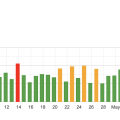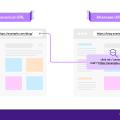Picture this: You have a fantastic website, brimming with valuable content, but it’s lost in the sea of the internet. That’s where SEO, or Search Engine Optimization, steps in to save the day. In “What Are The Main Components Of SEO?”, you’ll uncover the crucial elements that boost your site’s visibility on search engines. From mastering keyword research and on-page optimization to understanding technical SEO and link-building strategies, this guide will break down the foundational pillars you need to elevate your online presence. Dive in to transform your site into a beacon that attracts and engages your target audience.
What Are The Main Components Of SEO?
Have you ever wondered what drives your website up the search engine rankings? You’ve probably heard the term SEO thrown around a lot, but what are the main components of SEO? Let’s break down this crucial digital marketing strategy into bite-sized pieces, so you can understand what elevates your content from the depths of search engines to the coveted first page. Grab a cup of coffee, and let’s unravel the mysteries of SEO!
Keyword Research
You know how it is—you’re searching for something online, and you type a phrase into Google. That phrase is a keyword, and figuring out which keywords your audience is using is one of the foundational steps of SEO.
Finding the Right Keywords
Choosing the right keywords involves a combination of understanding your audience, knowing your industry, and using tools like Google Keyword Planner or SEMrush. These tools help you discover what people are searching for and how often.
Keyword Intent
Just knowing what words people are using isn’t enough. You also need to understand why they’re using those words. Are they looking to buy something, seeking information, or conducting research? This is known as keyword intent. Matching the intent can make your content far more valuable and relevant.
Long-Tail Keywords
Long-tail keywords are longer and more specific keyword phrases that people are more likely to use when they’re closer to making a purchase or finding information. These keywords are typically less competitive and can be a gold mine for SEO. Think “how to bake a vegan chocolate cake” instead of just “chocolate cake.”
On-Page SEO
This is where you have direct control. On-page SEO involves optimizing individual pages on your website to rank higher and earn more relevant traffic. It’s about making your website more accessible for both users and search engines.
Meta Titles and Descriptions
Meta titles and descriptions are HTML elements that you can customize to reflect the content of your page. They show up in search engine results and play a big role in whether users decide to click on your link.
| Element | Purpose |
|---|---|
| Meta Title | Concise headline in search results. |
| Meta Description | Brief summary to attract clicks. |
Header Tags
Header tags (H1, H2, H3, etc.) structure your page and make it easier to read. Search engines use them to understand the content hierarchy. Your main title should be in an H1 tag, and use H2s and H3s for subheadings.
Internal Links
Creating a web of internal links within your content helps both users and search engines navigate your site. It distributes your page authority and can boost your overall site ranking.
URL Structure
A clean and straightforward URL structure improves the user experience and can positively impact your SEO. Use keywords in your URLs, and avoid messy strings of numbers and symbols.
Off-Page SEO
Think of off-page SEO as your website’s reputation on the internet. It’s all about how other websites and users perceive your content.
Backlinks
Backlinks are links from other websites to yours. They act as votes of confidence for your content. High-quality backlinks from reputable sites can significantly boost your rankings.
Social Signals
While not a direct ranking factor, strong social media engagement signals to search engines that your content is valuable. Shares, likes, and comments can indirectly improve your SEO.
Guest Blogging
Writing articles for reputable websites in your industry can help you earn backlinks and increase your site’s visibility. Make sure to target high-authority sites for the best results.
Technical SEO
Technical SEO refers to the server-side optimizations and configurations that help search engines properly index your site. It’s the unseen part of SEO but equally important.
Site Speed
Page speed is a critical ranking factor. Tools like Google PageSpeed Insights can help you identify issues slowing down your site and provide recommendations to improve load times.
Mobile-Friendliness
With an increasing number of users accessing the web via mobile devices, having a mobile-friendly site is crucial. Google’s mobile-first indexing means your mobile site is now the primary version considered for ranking.
XML Sitemaps
An XML Sitemap is like a roadmap of your website that helps search engines find and index all your important pages. Make sure to submit it to search engine webmaster tools.
Robots.txt
This file tells search engines which pages to crawl and which to ignore. Properly configuring your robots.txt file can ensure that your important pages are indexed while excluding those that are not relevant.
Content Quality
Content is king, or so the saying goes. High-quality, relevant, and engaging content is the cornerstone of any successful SEO strategy.
Originality
Search engines prioritize unique content that provides real value. Plagiarized content can lead to penalties, so always strive for originality.
Relevance
Your content should directly address the needs and questions of your audience. Use your keyword research to guide the topics and structure of your content.
Engagement
Engaging content keeps users on your site longer and reduces bounce rates, which can positively impact your rankings. Use multimedia elements like images, videos, and infographics to make your content more captivating.
Length
Longer content tends to rank better because it is likely to cover a topic more comprehensively. Aim for articles that are at least 1,000 words to give search engines plenty to chew on.
User Experience (UX)
Good UX is about making your site enjoyable and easy to navigate for your visitors. Positive user experience can lead to higher engagement and better rankings.
Site Navigation
A straightforward and intuitive navigation menu allows users to find what they’re looking for quickly. This reduces bounce rates and keeps users on your site longer.
Readability
Make sure your text is easy to read by using a legible font size, breaking up text with paragraphs and headings, and using bullet points or numbered lists when appropriate.
Accessibility
Your website should be accessible to all users, including those with disabilities. This includes using alt text for images, proper contrast ratios, and ensuring your site is navigable by keyboard alone.
Analytics and Monitoring
Effective SEO is an ongoing process that requires constant monitoring and adjustment. Analytics tools help you track your progress and make data-driven decisions.
Google Analytics
Google Analytics provides a wealth of information about your visitors, including how they found your site, what pages they viewed, and how long they stayed. Use this data to identify successful tactics and areas that need improvement.
Search Console
Google Search Console gives you direct insights from Google about how your site is performing in search results. It can alert you to issues and provide recommendations for improvement.
Regular Audits
Performing regular SEO audits helps you stay on top of any issues that might be affecting your rankings. This includes checking for broken links, ensuring meta tags are optimized, and verifying that your site is mobile-friendly.
Local SEO
If you have a physical presence or serve a specific geographic area, local SEO can help you attract more nearby customers.
Google My Business
Setting up and optimizing your Google My Business profile can dramatically improve your visibility in local searches. Make sure your profile is complete with correct business hours, location, and contact information.
Local Citations
Local citations are mentions of your business on other websites, including directories like Yelp and Yellow Pages. Ensuring your business information is consistent across all platforms can improve your local SEO.
Reviews and Ratings
Positive customer reviews can boost your credibility and ranking. Encourage satisfied customers to leave reviews and respond to any feedback, positive or negative.
Conclusion
SEO is a multifaceted strategy that involves various components working together to improve your website’s visibility and ranking on search engines. From keyword research and on-page optimization to technical SEO and user experience, each component plays a vital role in attracting and retaining traffic. Keep honing your strategies, and you’ll soon see the payoff in better rankings, more traffic, and ultimately, greater success.
You made it to the end! Now you have a comprehensive understanding of the main components of SEO. Ready to start applying these tips and tricks to your own website? Go ahead and dive in—your future self will thank you for it!











